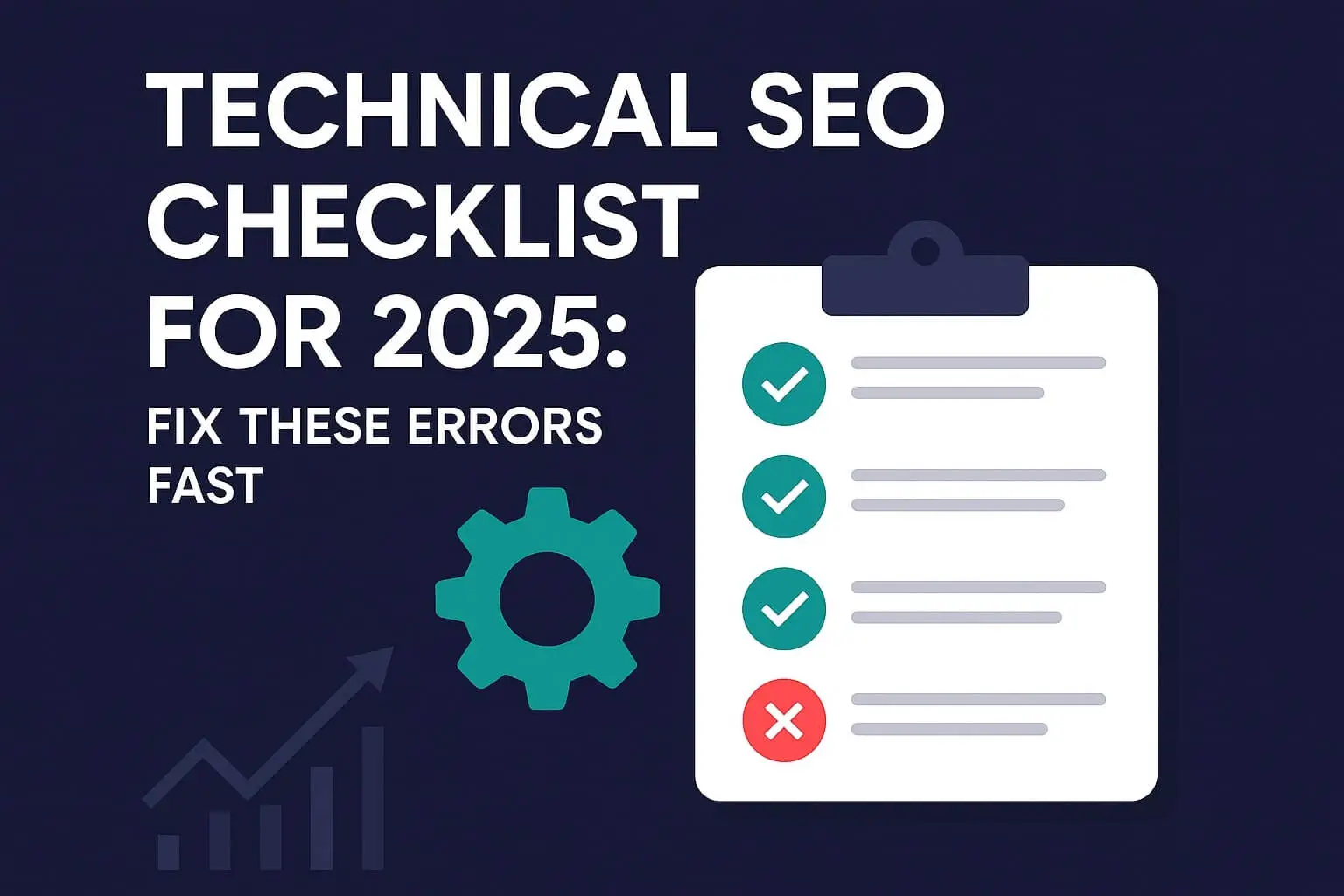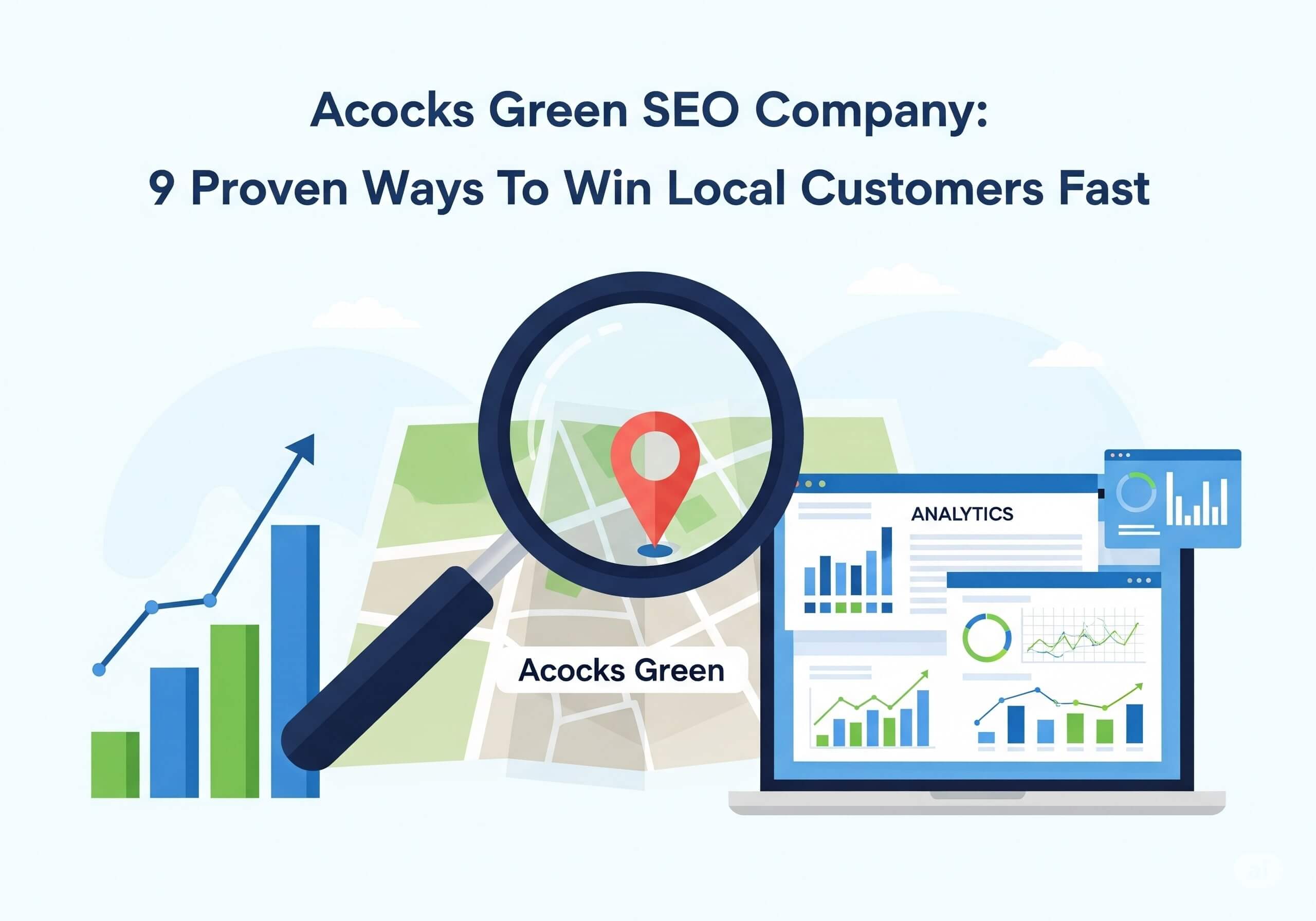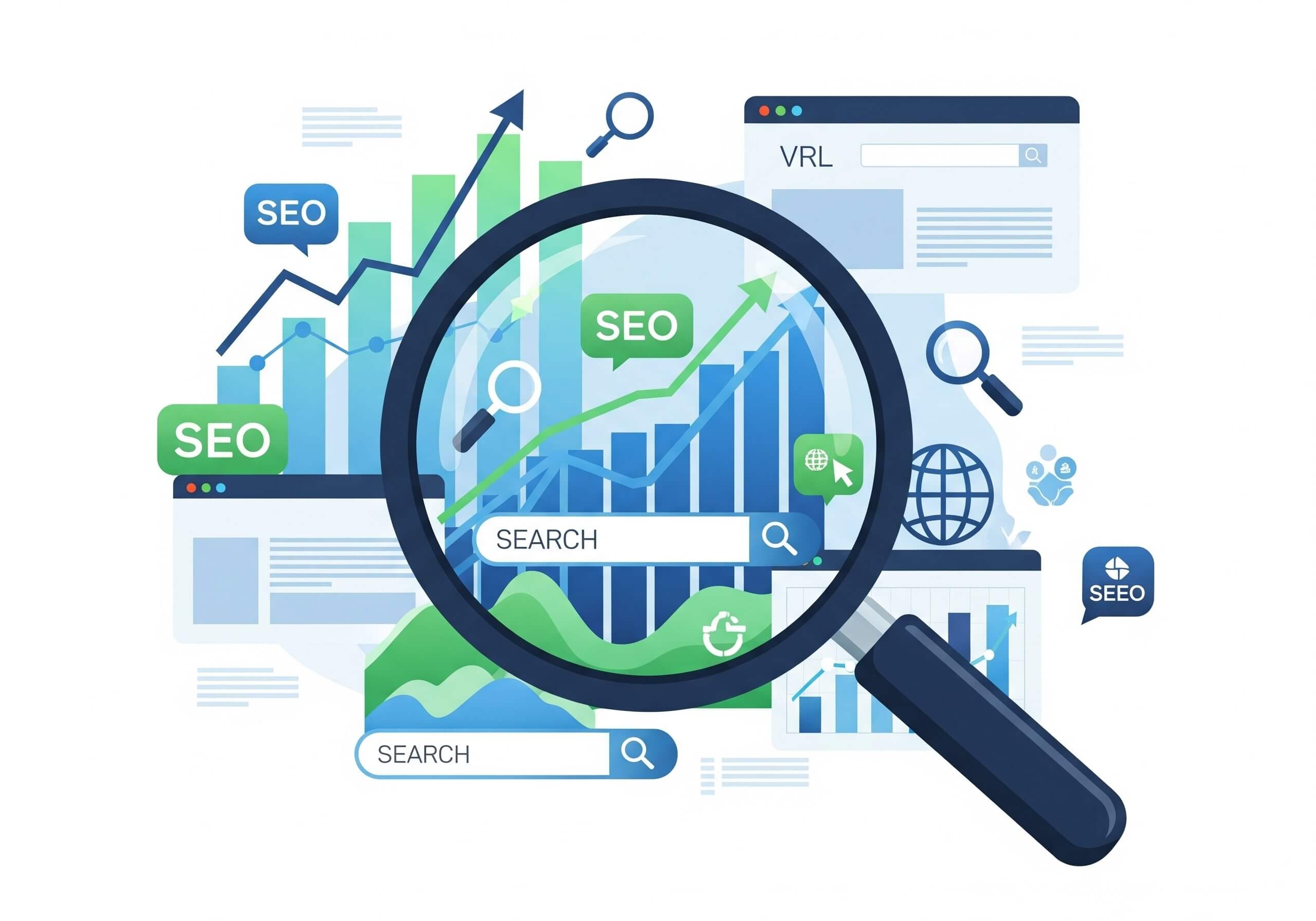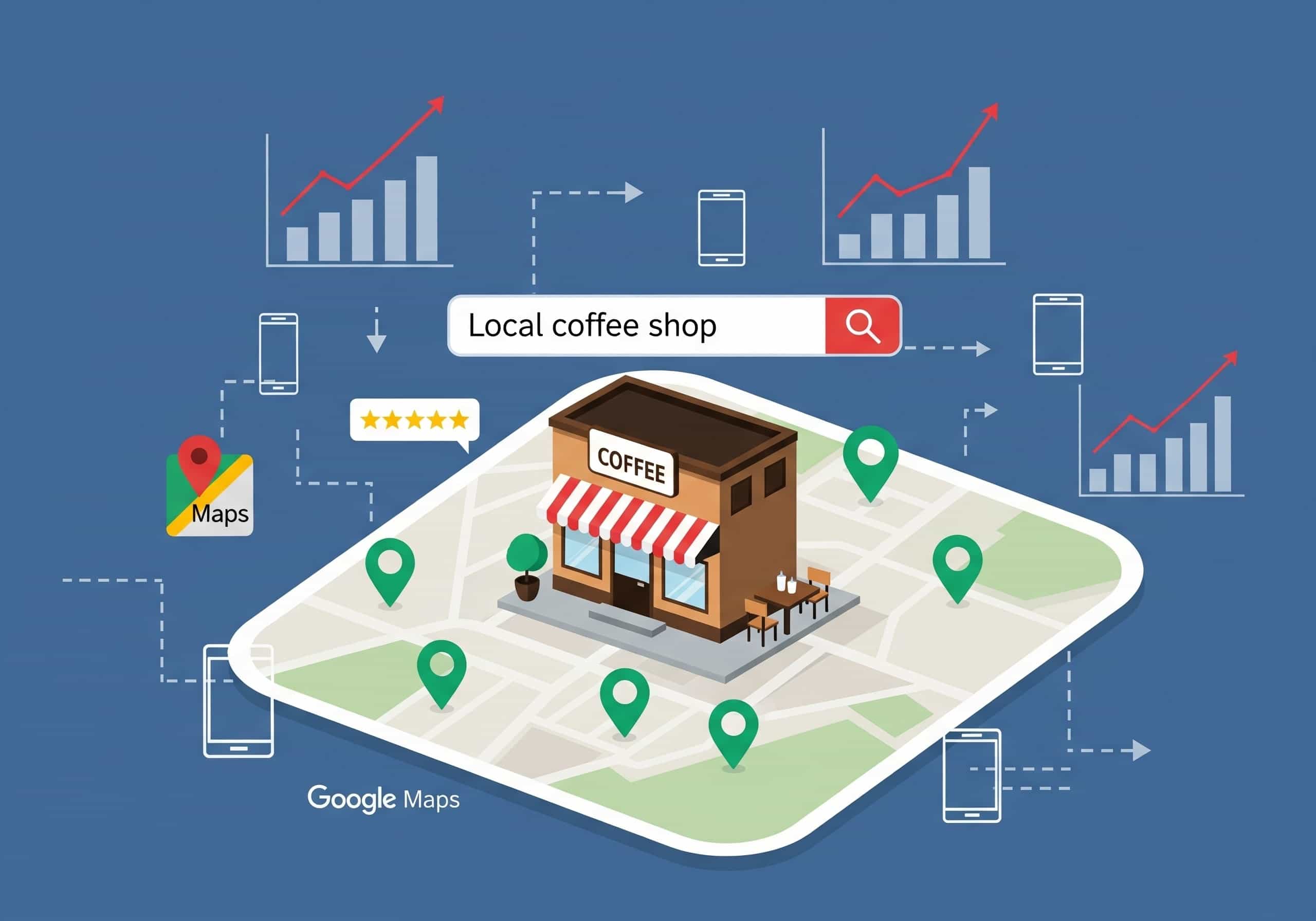
Imagine this: A potential customer is standing just a few streets away from your business, searching “best car dealership near me” or “coffee shop open now.” If your business doesn’t appear in that search, you’ve just lost money to a competitor. That’s the power of local search and it’s why local SEO isn’t optional anymore, it’s a profit driver.
In fact, studies show that nearly 78% of local searches lead to an offline purchase within 24 hours. That’s not just traffic that’s real revenue.
So, how does local SEO increase profits?
By connecting intent with opportunity. Local SEO ensures that when people nearby are actively looking for the products or services you offer, your business shows up first ahead of competitors. It translates digital visibility into foot traffic, phone calls, and sales.
Who Needs Local SEO?
Here’s the short answer: any business that serves customers in a specific geographic area.
Restaurants, cafés, and salons.
Healthcare providers, clinics, and gyms.
Home service businesses like plumbers, electricians, or cleaning companies.
Car dealerships and automotive services.
Professional services: law firms, real estate agents, accountants.
If your business relies on local customers, then local SEO is the fastest path to growth.
The 3 Pillars of Local SEO Success
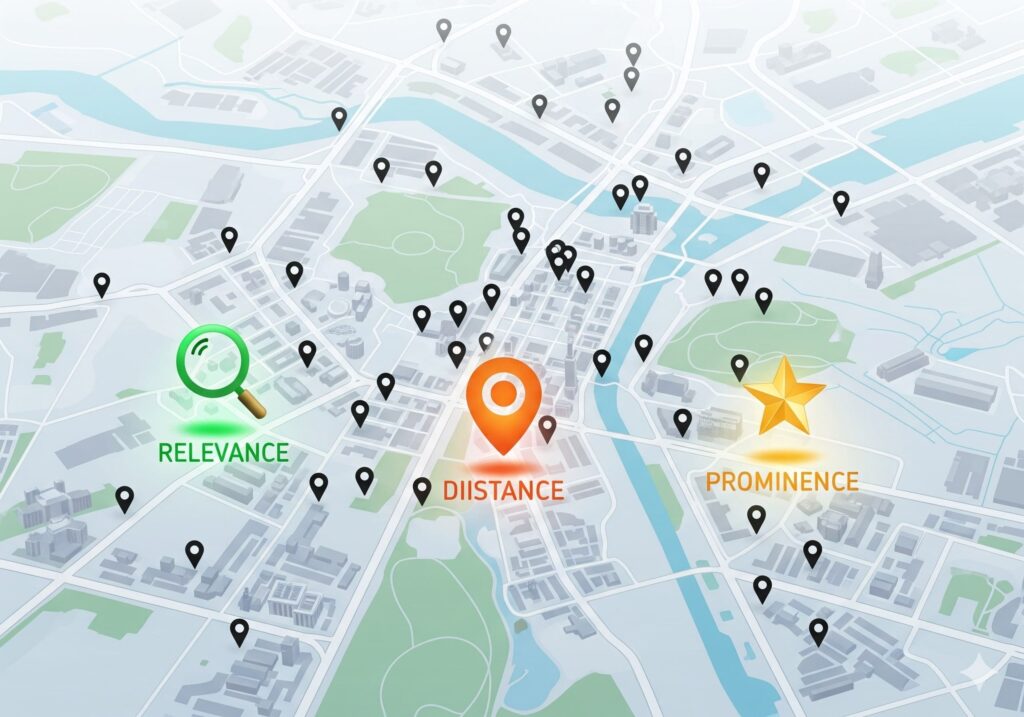
Google has been clear: local rankings depend on three key factors Relevance, Distance, and Prominence.
Relevance
This is how well your business matches what the searcher is looking for.
Example: If someone types “hybrid car dealership in Lahore”, and your GBP category and website content clearly show that you sell hybrid cars, you’re more likely to appear.
Relevance is built by accurate categories, detailed services, and keyword-rich local content.
Distance
Google considers how close your business is to the searcher.
This means location signals like your address, service areas, and embedded maps are critical.
For multi-location businesses (like car dealerships), creating dedicated pages for each branch helps you capture multiple “near me” searches.
Prominence
This is how well-known and trusted your business is, both online and offline.
Reviews, local backlinks, directory citations, and even local PR events feed into this.
The more people talk about and engage with your business, the more Google trusts you.
For example, a dealership with hundreds of reviews, consistent citations, and press mentions will outrank one with a bare profile even if both are the same distance away.
Google Business Profile (GBP) Optimization Deep-Dive
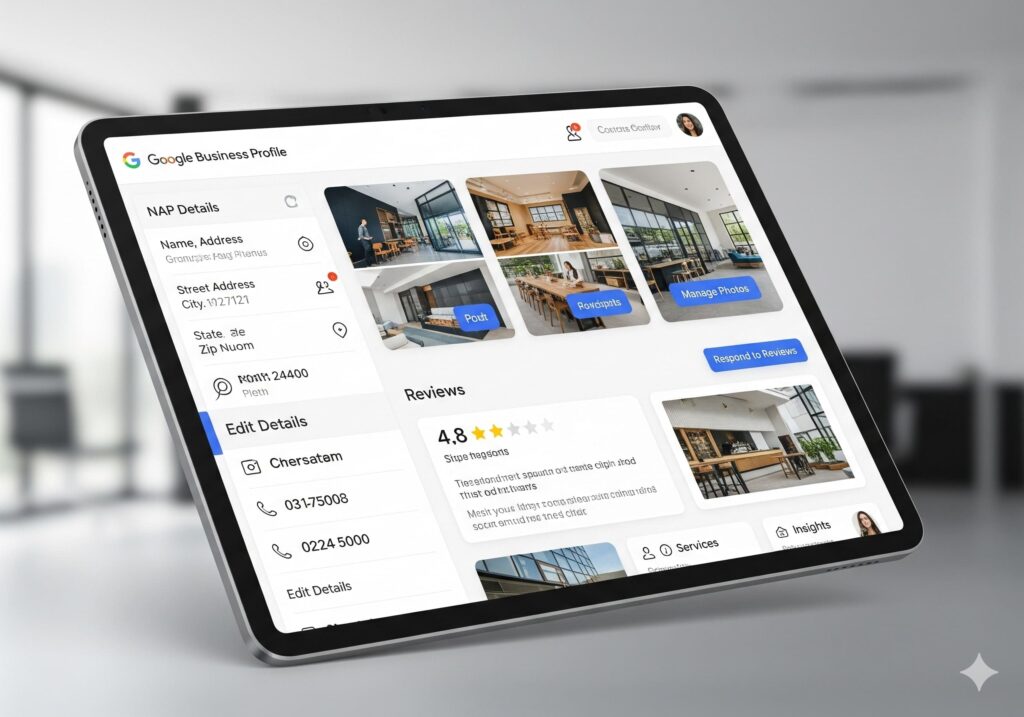
If local SEO were a car, Google Business Profile (GBP) would be the engine. It’s the single most powerful factor in deciding whether your business shows up in the Local Map Pack and on Google Maps.
A fully optimized GBP can literally transform your local SEO performance. It boosts your visibility, improves your local SEO CTR (click-through rate), and ultimately proves how local SEO increases profits.
Let’s break down how to set up and optimize your profile so that it becomes a customer-converting machine.
Step 1: Claim and Verify Your GBP
Before you do anything else, make sure your business is claimed and verified. Unverified businesses simply don’t get the same trust signals.
Head to Google Business Profile Manager.
Claim your listing.
Complete the verification process (by mail, phone, or email).
⚠️ Pro Tip: Search for your business name first. If a duplicate already exists (very common on Google or Yelp), clean it up before adding new data. Duplicate Yelp listings or GBP profiles can confuse customers and drag down rankings.
Step 2: Perfect Your NAP (Name, Address, Phone)
Google loves consistency. Make sure your NAP information is:
Identical across your GBP, website, Yelp, Facebook, Apple Maps, Bing Places, and niche directories.
Using the same abbreviations (e.g., “Street” vs. “St.”).
Inconsistencies cause data confusion → lower trust → lower rankings.
💡 Example: A car dealership listing one address as “123 Main Street” and another as “123 Main St.” in Yelp may look small, but to Google’s algorithm it’s a mismatch.
Step 3: Choose the Right Categories
Categories are the backbone of relevance. Your primary category should describe your core business (e.g., Car Dealership). Then add secondary categories to capture additional services:
Used Car Dealer
Auto Repair Shop
Auto Parts Store
⚠️ Many businesses get this wrong by picking broad or incorrect categories. This single mistake can tank your visibility.
Step 4: Add Attributes and Business Details
Attributes help you stand out and increase CTR:
Payment methods (credit cards, financing, cash).
Accessibility (wheelchair accessible entrance).
Service options (delivery, pickup, in-store shopping).
For restaurants: menu links, outdoor seating, vegan options.
For car dealerships: “test drives available,” “financing options,” “service center on site.”
The more complete your attributes, the more you align with customer intent which translates to clicks and visits.
Step 5: Photos, Videos & Virtual Tours
High-quality visuals directly influence local SEO CTR. Businesses with photos receive 42% more requests for directions and 35% more click-throughs to websites.
Upload exterior and interior photos.
Add product shots (cars, menu items, medical equipment).
Use short video clips even 10-second walkarounds work.
Virtual tours (great for gyms, showrooms, event spaces).
⚠️ Don’t let stock photos dominate your listing. Google favors authentic, geo-tagged images uploaded directly from your business location.
Step 6: Products, Services & Menus
Populate every section you can:
Products: List inventory, even if you don’t sell directly online. Car dealerships can list current models.
Services: Detail everything from “oil changes” to “hybrid diagnostics.”
Menus: For restaurants, cafes, or salons.
These sections expand your relevance footprint meaning you appear for more search queries.
Step 7: GBP Posts & Updates
Think of GBP posts as free advertising real estate. They appear in Maps and Search results and improve local SEO performance by showing Google your business is active.
Types of posts you should use:
Updates: Announce promotions, events, or new stock.
Offers: Highlight discounts with a time limit.
Events: Perfect for workshops, open houses, or test-drive days at a dealership.
New Products/Services: Showcase new arrivals.
💡 Example: A dealership posts “0% financing this weekend only” → higher CTR → measurable sales lift.
Step 8: Q&A Section (Frequently Overlooked!)
The Q&A section acts like a public FAQ. Don’t leave it blank.
Add common questions yourself (yes, you can).
Provide helpful, keyword-rich answers.
Monitor regularly to respond to customer-generated questions.
This builds trust and improves conversion rates because customers feel informed before contacting you.
Step 9: Reviews = Prominence + Profits
Reviews are the most powerful form of social proof. Google has confirmed that reviews influence local rankings.
Encourage customers to leave reviews.
Respond to every review (positive or negative).
Use keywords naturally in responses (e.g., “Thanks for choosing us as your car dealership in Lahore”).
📊 Studies show that businesses who actively manage reviews see a 25% increase in calls and visits. That’s direct proof of how local SEO increases profits.
⚠️ Avoid fake reviews. Google is cracking down, and trust once lost is nearly impossible to recover.
Step 10: GBP Insights & Measuring Your “Local SEO Take”
Google provides built-in analytics called GBP Insights. This is where you see your local SEO take the direct return on your local efforts.
Metrics to track:
How customers find you (direct vs. discovery searches).
Search queries used.
Actions taken: website clicks, calls, requests for directions.
Photo views compared to competitors.
💡 Pro Tip: Tag your website link in GBP with UTM parameters so you can measure local SEO CTR inside Google Analytics (GA4). Example:
GBP Optimization Checklist (Quick Recap)
Claim & verify your profile.
Fix duplicates (especially duplicate Yelp listings).
Add consistent NAP info.
Choose primary + secondary categories.
Fill in all attributes.
Upload authentic, high-quality photos & videos.
List products, services, or menus.
Post weekly updates.
Manage & respond to reviews.
Track performance with Insights + UTMs.
The Bottom Line
Your Google Business Profile is the foundation of your local SEO strategy. When optimized correctly, it:
Improves your visibility in the Map Pack.
Increases CTR through compelling photos, posts, and attributes.
Builds trust with reviews and Q&A.
Directly shows how local SEO increases profits by generating more calls, visits, and purchases.
Most competitors only set up the basics. If you put in the effort to fully optimize GBP, you’ll dominate your local market before even touching advanced tactics.
In the next section, we’ll go deeper into your website and on-page local SEO where you connect your GBP signals with strong site foundations to build unstoppable local authority.
Website & On-page Local SEO
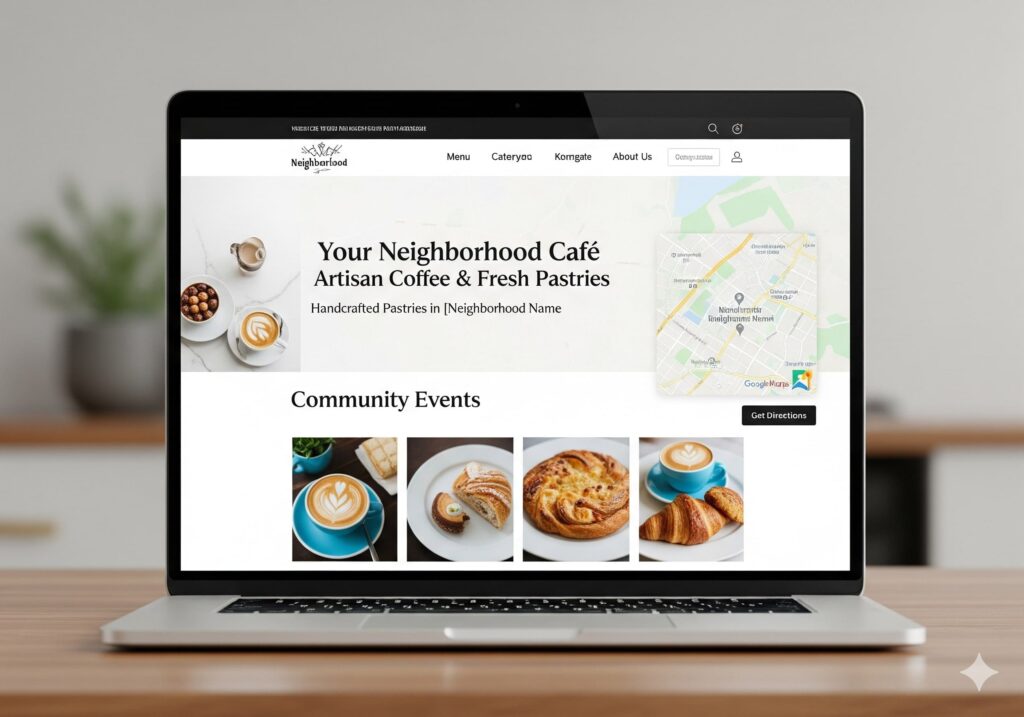
Your Google Business Profile is the cornerstone of local visibility, but your website acts as the engine that drives conversions and long-term trust. Many business owners overlook how critical on-page local SEO truly is. If your GBP is the door, your website is the store it’s where potential customers decide whether to buy from you or move on to a competitor.
This section dives into the exact steps to make your website a local SEO powerhouse that doesn’t just rank, but also increases profits.
Why On-Page SEO Matters for Local Search
Google doesn’t only rely on your GBP to decide who shows up in the local pack. Your website sends strong ranking signals around:
Relevance (how well your content matches search intent)
Authority (backed by reviews, links, and expertise)
Location accuracy (NAP consistency and schema)
When optimized properly, your website supports your GBP and boosts local SEO performance across all search touchpoints.
Key Elements of On-Page Local SEO
1. Local Keyword Optimization
Use geo-modifiers (e.g., “plumber in Chicago,” “dentist near Boston”) in title tags, H1s, and meta descriptions.
Integrate main keywords like how local SEO increases profits into your service and landing pages to tie profitability directly to local visibility.
Create location-specific landing pages for every service area to capture searches like “roof repair Dallas” or “car dealership local SEO in Houston.”
Pro tip: Don’t overstuff keywords. Instead, weave them naturally into content, FAQs, and calls-to-action.
2. NAP Consistency (Name, Address, Phone)
Your website should clearly display your business name, address, and phone number on every page (ideally in the footer). This aligns with your GBP and citations, avoiding mixed signals.
Double-check that you don’t have duplicate Yelp listings or inconsistent data across platforms this can confuse both Google and customers.
3. Schema Markup for Local SEO
Implement LocalBusiness schema to help search engines understand your business details. Add:
Business name & logo
Address & geo-coordinates
Opening hours
Reviews
Service area
This structured data gives Google confidence in your local SEO take and improves visibility in rich results like map snippets and FAQs.
4. Optimize for CTR (Click-Through Rate)
Ranking high isn’t enough you need people to click.
Write compelling meta titles like: “Affordable Car Dealership Local SEO | Drive More Sales in Your City”
Add emotional hooks in meta descriptions: “Discover how local SEO increases profits for small businesses boost visibility and customer trust today.”
Use schema-based FAQs on your service pages to grab SERP real estate and improve local SEO CTR.
5. Mobile & Speed Optimization
Over 60% of local searches happen on mobile, so ensure fast loading times, clickable phone numbers, and mobile-first design.
Tools like Google PageSpeed Insights or GTmetrix can help diagnose speed issues.
Local SEO Content That Converts
Your website shouldn’t just rank it should sell.
Add case studies or testimonials proving your success in local markets.
Use blog posts targeting questions like “Who needs local SEO?” or “Why is local SEO important for car dealerships?”
Create industry-specific guides that showcase your expertise, which also helps earn backlinks.
Example: Car Dealership Local SEO
Let’s put this into practice.
A car dealership might optimize their homepage for “Ford dealership in Dallas” while creating landing pages for specific neighborhoods. They’d integrate duplicate Yelp listing cleanups, add schema for inventory, and publish blogs on “How local SEO increases profits for auto dealers”.
This multi-layered approach builds authority, captures more searches, and directly increases showroom visits.
Prominence: Reviews, Citations, and Links
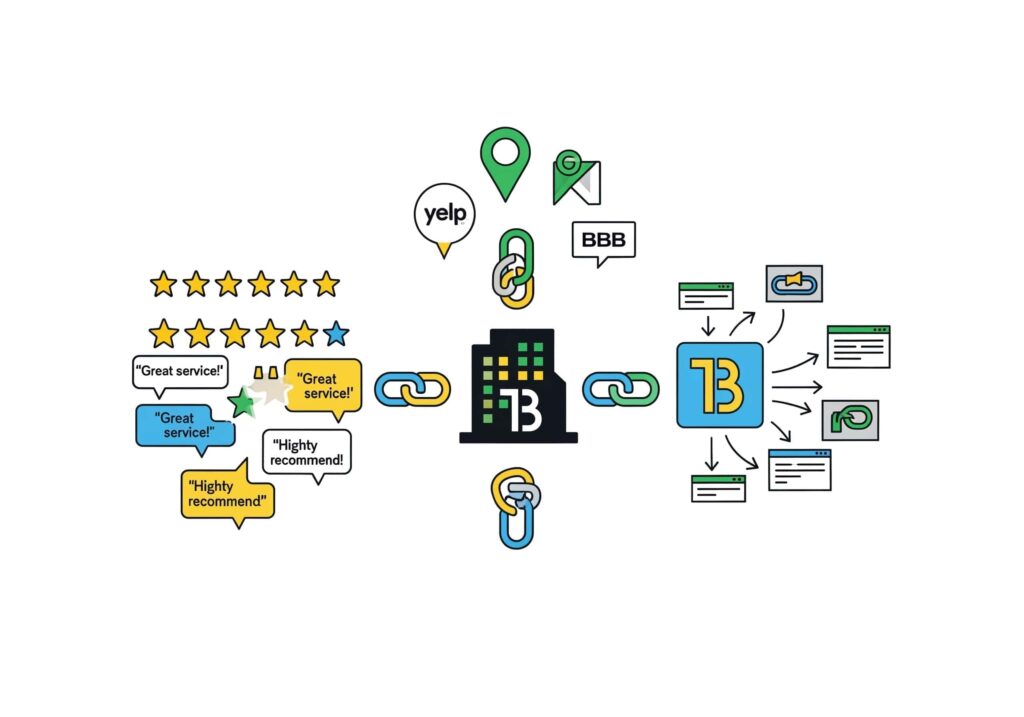
In Google’s local SEO algorithm, prominence measures how well-known and reputable your business appears online. Even if your business is highly relevant and nearby, weak prominence can keep you buried under competitors. This is where reviews, citations, and backlinks become your secret weapons.
1. Reviews: The Profit Multiplier
Positive reviews don’t just boost trust they directly impact conversions. When a potential customer compares two businesses side by side, the one with better ratings and authentic reviews almost always wins.
How Local SEO Increases Profits through Reviews: A Harvard study found that just a one-star increase in Yelp ratings can boost revenue by 5–9%. Local businesses that actively request and respond to reviews often see higher CTR (click-through rate) in map results, which translates into more calls, visits, and sales.
Best practices:
Request reviews right after service (via text or email).
Reply to all reviews even negative ones with professionalism.
Use keywords naturally in responses (e.g., “Thank you for trusting us with your car repair in Chicago.”).
2. Citations: Your Local Footprint
Citations are business listings across directories like Yelp, YellowPages, Bing Places, and industry-specific sites. Google uses them to validate your NAP (Name, Address, Phone) consistency.
Duplicate Yelp Listings: One common issue that hurts local SEO performance is having duplicate or outdated listings. For example, many car dealerships discover multiple Yelp entries with old phone numbers. Cleaning these up and maintaining accurate citations strengthens your online credibility.
Quick win: Use tools like BrightLocal or Whitespark to find and fix inconsistencies in your listings.
3. Backlinks: The Authority Engine
While reviews and citations build trust, backlinks signal authority. Local backlinks from newspapers, community blogs, and local chambers of commerce are far more valuable than random links.
Car Dealership Local SEO Example: A dealership that sponsors a local charity run and gets featured on the event’s website not only earns goodwill but also a high-value local backlink.
Best practices:
Create partnerships with local influencers.
Publish local guides (e.g., “Best Car Maintenance Tips in Dallas”) and pitch them to news sites.
List your business in local chambers, directories, and niche publications.
4. The Bottom Line on Prominence
Prominence is what transforms visibility into profitability. Strong reviews increase CTR, consistent citations improve trust, and backlinks build authority. Together, they create the compounding effect that separates thriving local businesses from those struggling to be found.
If you’re asking, “Who needs local SEO?” the answer is simple: any business that relies on foot traffic, local service areas, or community trust. Prominence is the bridge between visibility and profit.
Beyond Google: Apple, Bing & Niche Platforms
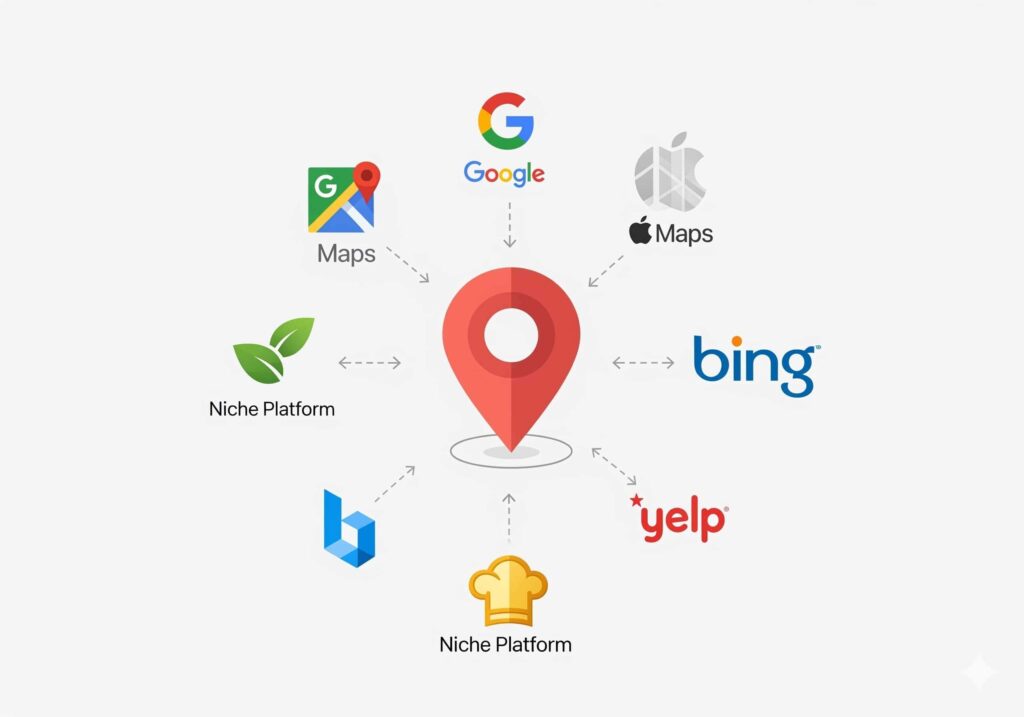
While Google dominates local search, businesses that focus only on Google are leaving money on the table. Customers discover local businesses across multiple platforms and showing up everywhere gives you a competitive edge.
Apple Maps
Apple Maps powers navigation for millions of iPhone users, and with Siri voice searches growing, your business needs to be there. Ensuring your Apple Business Connect profile is complete with updated business hours, categories, and photos can boost visibility on iOS devices. For businesses like car dealerships, appearing on Apple Maps helps capture on-the-go buyers searching for “dealerships near me.”
Bing Places for Business
Although Bing has a smaller market share compared to Google, it commands a loyal user base especially on Microsoft devices and browsers. Optimizing Bing Places for Business ensures you reach customers who may not rely on Google. Plus, Bing integrates with Cortana and Windows devices, expanding your local SEO reach.
Yelp, TripAdvisor & Industry Directories
Niche platforms can’t be ignored. Yelp, for instance, is heavily integrated with Apple Maps, meaning duplicate Yelp listings or outdated profiles can harm your visibility. Cleaning up these duplicates improves trust and boosts your local SEO performance. Similarly, platforms like TripAdvisor for travel, Zocdoc for healthcare, or Cars.com for dealerships allow businesses to capture high-intent traffic.
Why Going Beyond Google Matters
Diversification = Security: If Google changes its algorithm tomorrow, you’ll still be discoverable elsewhere.
Consumer Trust: Many buyers check multiple platforms before making a decision.
Voice & AI Search: Siri, Alexa, and Cortana all draw from different data sources.
In short, expanding beyond Google makes your local SEO future-proof while boosting discovery in places your competitors may overlook.
Tracking & Analytics

A strong local SEO strategy isn’t just about showing up it’s about measuring performance and making data-driven improvements. Without tracking, you’re flying blind.
Google Business Profile Insights
Your Google Business Profile (GBP) provides valuable data, such as:
Search Queries: What people type before finding your business.
Customer Actions: Calls, website visits, and direction requests.
Photo Views: How often your photos are seen compared to competitors.
This helps identify what’s working (and what isn’t). For example, if most searches come from “emergency dentist near me,” you can create more content around that term.
Call Tracking
Local SEO often drives phone calls but without call tracking, you won’t know which campaigns are working. Tools like CallRail or Twilio let you assign unique numbers to GBP, website, and ads. You’ll see which source delivers the most valuable leads.
Heatmaps & Behavior Analytics
Understanding how visitors interact with your website is crucial. Heatmap tools like Hotjar or Microsoft Clarity show where users click, scroll, or drop off. This insight helps improve landing pages for higher conversions.
Review Monitoring
Since reviews directly influence local SEO and trust, monitoring them in real time is critical. Tools like BirdEye, Podium, or Trustpilot can alert you instantly when new reviews come in, allowing faster responses.
Competitor Benchmarking
Tracking isn’t just about you it’s also about your competition. Tools like BrightLocal or Whitespark let you compare rankings, citations, and review scores against competitors, helping you identify gaps and opportunities.
Why Analytics Matters
Data ensures you’re not just “doing SEO” but actually driving measurable business growth. Tracking:
Proves ROI to stakeholders.
Helps refine content and keyword strategies.
Reveals which platforms deliver the best leads.
In local SEO, the businesses that measure, adapt, and optimize are the ones that win.
Industry Playbooks + 30-Day Action Plan
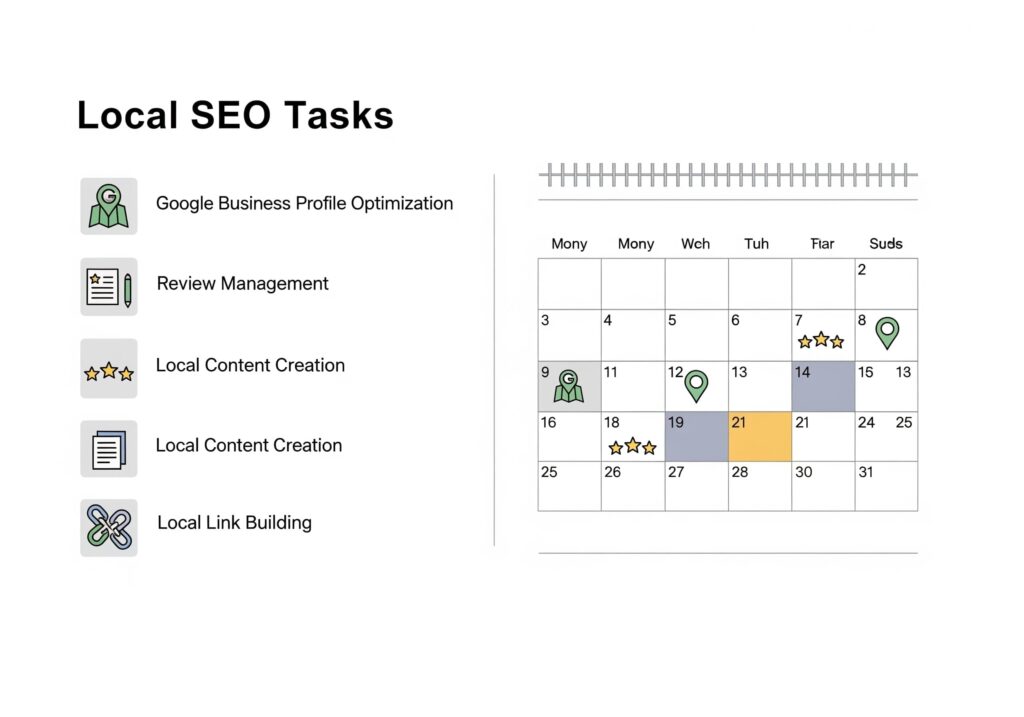
One of the biggest challenges businesses face when adopting local SEO is knowing what to prioritize first. Every industry is different what works for a restaurant might not be the same as what a law firm or car dealership needs. That’s why having both industry-specific playbooks and a 30-day action plan is the fastest way to see results.
Industry Playbooks
Restaurants & Cafes
Optimize menus and photos on GBP.
Encourage customers to leave reviews that mention popular dishes.
Check for and remove duplicate Yelp listings, since many diners use Yelp as a primary search platform.
Track local SEO performance through reservation clicks and “directions requests.”
Law Firms & Professional Services
Target long-tail keywords like “divorce lawyer near me” or “tax consultant in [city].”
Build local citations in legal directories.
Focus on improving local SEO CTR with strong title tags like “Award-Winning Divorce Lawyer in Chicago.”
Car Dealerships
Create dedicated pages for each dealership location and inventory category.
Optimize for car dealership local SEO by highlighting financing offers, test drives, and local service center promotions.
Showcase customer testimonials Google favors dealerships with strong review signals.
Retail & E-commerce with Local Presence
Blend traditional e-commerce SEO with local targeting (e.g., “Buy [product] in [city]”).
Track in-store visits as a measure of how local SEO increases profits.
30-Day Local SEO Action Plan
Week 1 – Foundation
Claim and fully optimize your Google Business Profile (NAP, services, categories, photos).
Audit your website for on-page SEO and create location-specific landing pages.
Week 2 – Relevance & Visibility
Research and implement local keywords based on industry.
Ensure schema markup (LocalBusiness, FAQ, Review) is added to your site.
Submit your business to high-value directories.
Week 3 – Prominence & Engagement
Launch a review acquisition campaign (automated SMS/email requests).
Fix duplicate Yelp listings and ensure consistent citations across platforms.
Run a small local ad campaign to boost visibility while SEO takes hold.
Week 4 – Tracking & Growth
Measure local SEO performance in Google Business Insights (calls, CTR, direction requests).
Compare pre- and post-optimization results to see who needs local SEO the most in your organization.
Double down on strategies that increase CTR and conversions.
When executed correctly, this framework ensures your business is not just visible but trusted, helping you dominate your local market in as little as one month.
AI’s Growing Role in Local SEO

Local SEO is no longer just about manual optimizations and guesswork. Artificial Intelligence (AI) is transforming the way businesses appear in local searches, how customers interact with local listings, and even how marketers make decisions. If you want to dominate your local market, understanding how AI is shaping local SEO performance is essential.
AI in Google’s Local Ranking System
Google has increasingly integrated AI into its ranking algorithms. Updates like RankBrain and BERT help Google better understand local search intent and conversational queries. For example:
A customer might search: “best car dealership near me with financing options”.
AI interprets the nuance (dealership + location + financing) and delivers hyper-relevant local results.
This means relevance, distance, and prominence the three pillars of local SEO are now filtered through an AI-driven lens. Businesses that optimize their content for natural language queries gain a measurable advantage.
AI-Powered Tools for Local SEO Optimization
AI tools can streamline and scale local SEO in ways that were impossible a few years ago. For example:
Listing Management AI → Detect and fix duplicate Yelp listings or inconsistent NAP (Name, Address, Phone) data across directories.
Review Sentiment Analysis → AI can analyze customer reviews at scale, helping you identify recurring strengths and weaknesses.
CTR Improvement → By analyzing user behavior, AI can suggest better local SEO titles and descriptions to improve local SEO CTR.
Hyper-Personalization in Local Search
One of the most profitable shifts AI brings is hyper-personalization. Local search results are no longer one-size-fits-all. Instead, Google tailors results based on:
Past behavior (search and click history)
Device type (mobile vs desktop searches differ)
Context (time of day, weather, or even holidays)
This personalization means your business must ensure every touchpoint GBP listing, reviews, website is optimized for maximum relevance. When customers see results tailored to them, local SEO take becomes a direct driver of sales and customer loyalty.
Industry-Specific AI Applications
Different industries are leveraging AI in unique ways:
Car Dealership Local SEO → AI chatbots answer finance and availability queries, increasing conversions.
Restaurants → Predictive AI models recommend dishes or happy hours to local customers searching nearby.
Healthcare & Clinics → AI optimizes appointment bookings and local map visibility.
AI as a Profit Multiplier
Ultimately, how local SEO increases profits is tied to efficiency. AI reduces wasted ad spend, increases CTR, and improves the accuracy of listings. Businesses that adopt AI-driven strategies can expect:
Lower customer acquisition costs
Higher conversion rates
Better long-term local visibility
AI isn’t just a support tool it’s becoming a core driver of local SEO dominance. Businesses that delay adoption risk being left behind as their competitors harness smarter, faster, and more profitable local search tactics.
FAQs for Local SEO Guide
Q1: Who needs local SEO?
A: Any business that serves customers in specific locations can benefit from local SEO. From restaurants and retail stores to car dealerships and professional services, local SEO helps attract nearby customers and increases visibility in Google Maps and search results.
Q2: How does local SEO increase profits?
A: Local SEO improves your visibility for people actively searching for your products or services in your area. Higher visibility leads to more clicks, phone calls, in-store visits, and ultimately more sales, boosting overall profits.
Q3: What is a Google Business Profile, and why is it important?
A: A Google Business Profile (GBP) is your business’s online listing on Google. Optimizing your GBP with accurate business information, photos, reviews, and updates ensures you appear prominently in local search results and maps, driving more customers.
Q4: How do reviews affect local SEO performance?
A: Reviews improve your prominence and credibility. Positive reviews increase trust, click-through rates, and ranking potential. Monitoring and responding to reviews also signals to Google that your business is active and customer-focused.
Q5: What are local citations, and why do I need them?
A: Local citations are mentions of your business’s name, address, and phone number across directories like Yelp, Yellow Pages, and industry-specific sites. Consistent citations boost local SEO performance and help Google verify your business’s legitimacy.
Q6: Can duplicate listings hurt my local SEO?
A: Yes. Duplicate Yelp listings or directory entries can confuse Google and dilute reviews, reducing your rankings. Cleaning up duplicates and maintaining consistent information improves local SEO outcomes.
Q7: How can I improve local SEO CTR?
A: Optimize your titles, meta descriptions, and GBP posts with local keywords and persuasive copy. Adding FAQ schema, offers, and high-quality photos also encourages more clicks from search results.
Q8: Does AI play a role in local SEO?
A: Absolutely. AI tools can help analyze keywords, monitor reviews, optimize content, and predict customer behavior, making local SEO campaigns more efficient and profitable.
Q9: How long does it take to see results from local SEO?
A: Results vary depending on your industry, competition, and how well your GBP, website, reviews, and citations are optimized. Many businesses see noticeable improvements within 30–60 days.
Q10: Can local SEO help businesses beyond Google?
A: Yes. Optimizing for Apple Maps, Bing, Yelp, and niche directories ensures your business is visible to all local search audiences, capturing potential customers who may not use Google.
Conclusion: Claim Your Local Market Today
Local SEO isn’t just about ranking on Google it’s about dominating your neighborhood, owning your niche, and turning local searches into paying customers. When done right, it fuels visibility, credibility, and most importantly, profits. Businesses that once relied on foot traffic or referrals now find themselves thriving because of local search dominance.
The truth is simple: if you’re not leveraging local SEO, your competitors are. And they’re not just ranking higher they’re winning customers that could’ve been yours. Whether you’re a small café, a law firm, or a car dealership, local SEO gives you the competitive edge by placing your brand exactly where your customers are searching.
We’ve covered the pillars relevance, distance, and prominence along with practical steps like GBP optimization, reviews, citations, and analytics tracking. The question isn’t whether you need local SEO. The question is: How much are you leaving on the table by not investing in it today?
👉 If you’re ready to increase your revenue, boost your local SEO performance, and eliminate issues like duplicate listings holding you back, it’s time to act.
Call to Action:
Take control of your local market. Start with our 30-Day Local SEO Action Plan, or let our experts build a custom strategy designed for your business. Because when it comes to local dominance, waiting is the fastest way to lose.
🚀 Ready to see how local SEO increases profits for your business? Contact us today and let’s build your winning strategy.



